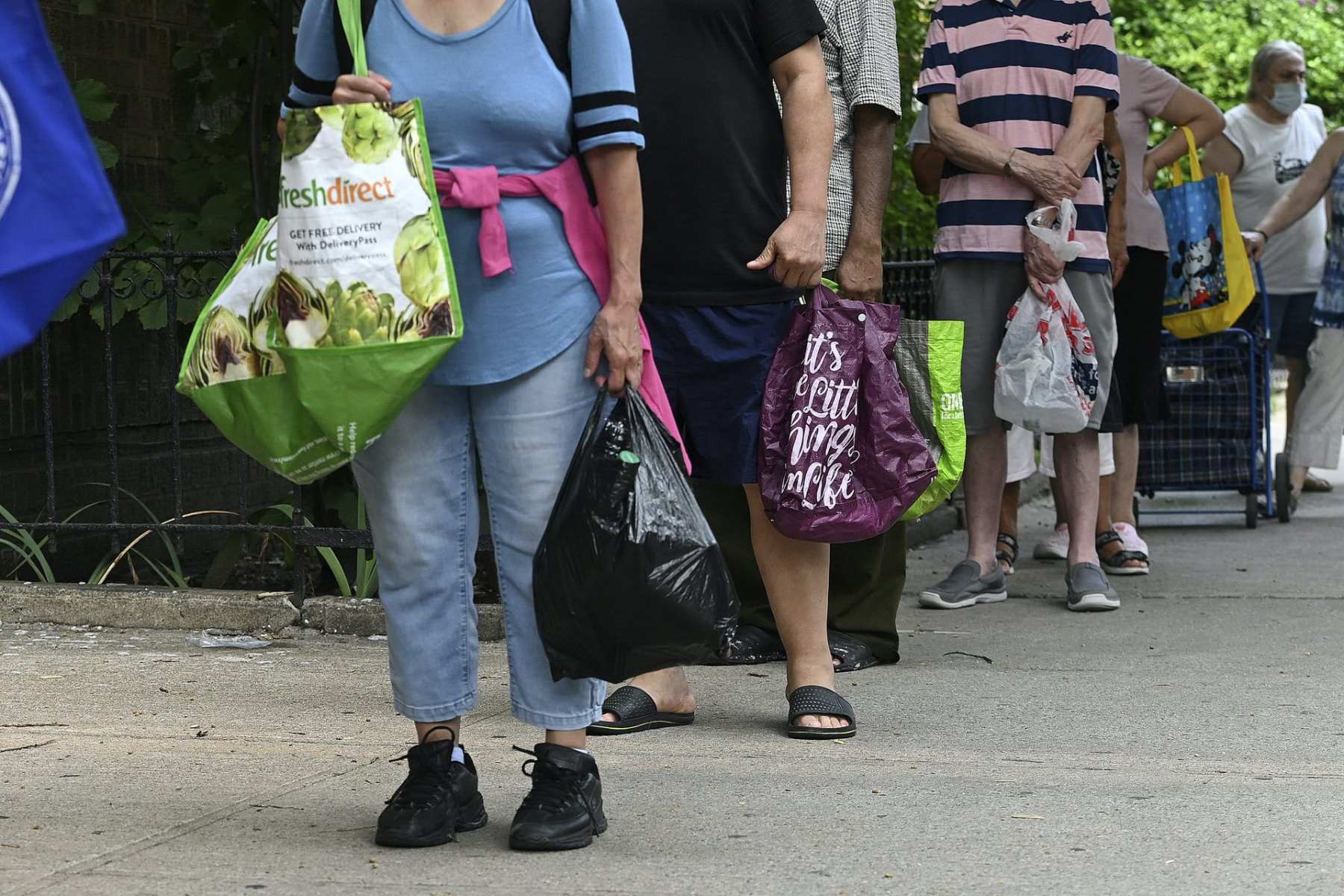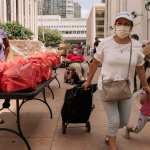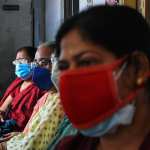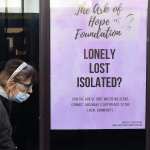When COVID-19 shut down California, Kim Overshiner’s Sonoma County daycare was an early casualty.
Within two weeks, she went from caring for 11 children full-time to two, part-time. And for Overshiner, a single mother with a teenager at home, losing that income was “terrifying, devastating.”
She’s tightened her pursestrings. Overshiner, 47, used to try to buy fairly nutritious foods: things like fresh produce or lean proteins. That isn’t an option now. Instead, she throws together casseroles with whatever she can find in the pantry — knowing that healthier foods are more expensive, and, at the moment, unaffordable.
Still, she’s one of the lucky ones, she said. A neighbor who gets monthly food assistance has shared cans of fruits and vegetables whenever he has extra. Early on in the pandemic, a county organization for child care providers distributed boxes of fresh produce; she grabbed eight of them and froze several. Business is slowly picking back up, though money remains tight. Whether providing food at her daycare, or at home, it’s a budgeting struggle.
“I had so much help from others who were like, ‘I know you are struggling.’ If I had to do that on my own, it would have been devastating — it would have been very hard to feed the kids, and my kid and then myself,” she said. Now, “we’ve gotten used to having to scrimp and scrape and get by, as opposed to in the beginning, when we were terrified.”
Her situation speaks to a deeper crisis unleashed by the COVID-19 pandemic and subsequent economic downturn: Millions of Americans struggling to consistently get enough nutrition, a phenomenon known as “food insecurity.” And, a new report warns, the burden is gendered. Cis women and transgender people — both of whom have suffered disproportionately in the COVID recession — are at the greatest risk.
Historically, women and girls have been more vulnerable to food insecurity, per the report, released Tuesday by global antipoverty organization CARE International. The pandemic has added to that burden. But limitations in how poverty and hunger data is collected and reported means the extent of the crisis is almost impossible to quantify.
Although the report focuses on global impact, food insecurity carries a stark relevance in the United States. In the first three months of the pandemic, more than 6 million Americans signed up for food stamps. That data isn’t broken down by gender — but given pre-existing trends, the report authors argue, women likely made up a sizable portion of that group.
“It’s a scary time, and I’m very concerned about what this means for women and children,” said Tjada McKenna, CARE’s chief operating officer.
CARE’s report emphasizes cis women and girls. But, McKenna noted, hunger data is even more limited for transgender people, despite their heightened vulnerability. About a fifth of trans people are unemployed because of the pandemic, with the figure jumping to a quarter for those who aren’t White.
“We don’t have good information, but it’s safe to say anyone who was experiencing disparity before the pandemic, that problem has gotten worse,” said Stacy Dean, the vice president for food assistance policy at the Center for Budget and Policy Priorities, a liberal Washington think tank.
Federal data collected by the U.S. Census Bureau shows that, as of July 21, about 12 percent of Americans reported their households sometimes or always didn’t have enough to eat within the past week.
That data does include a gender breakdown, and suggests a fairly even hunger distribution. But, McKenna said, women may be more likely to underreport hunger when asked about it in a survey. Longitudinal research examining what people actually eat over time would better probe what kind of disparities exist. Developing that kind of data means making sure that women are included in leadership roles when it comes to understanding the pandemic and crafting public policy responses, McKenna said.
Dean pointed to another stark data point. As of July 21, between 11 and 20 percent of adults with children reported not having enough food to feed their children. That’s a sharp increase from before the pandemic, she said. And it suggests parents — but especially moms — are also going hungry.
“Moms protect their children from hunger, so when we see households are struggling to put food on the table for children, that suggests a pretty serious problem that is being faced by women and mothers,” Dean said. “When parents cannot protect their children from hunger, that is a canary in a coal mine for a society. It really speaks to an economic distress that we have not experienced since the Great Depression.”
Much of the challenge, experts said, comes from the economic downturn, which has hit women harder in general, and Black and Latina women in particular. That means added barriers for a group already less likely to have consistent access to sufficient and healthy food. (Already, majority-Black and majority-Latino neighborhoods are more often food deserts, meaning there isn’t an adequate supply of grocery vendors to meet local need.)
The crisis is heightened for single parents. About 23 percent of children live in households headed by a single mother, according to data from the U.S. Census Bureau. Already, they are typically less likely to have secure access to food. And they have lost jobs at a higher rate than many other demographic groups.
“It’s a compounding effect,” Dean said. “COVID has taken a terrible problem and made it worse.”
The lack of comprehensive gender-conscious hunger data is a significant problem, McKenna said. Another that she pointed to: the expiration of the federal enhanced unemployment benefit, which gave people $600 per week if they didn’t have work.
Meanwhile, Dean said, the closure of schools has made it harder for families that typically relied on school meals to feed their children. Federal aid to transfer the value of those school meals to families now going without, she said, could also help address even some of the crisis.
For Overshiner, it’s a problem that shouldn’t be hard to tackle.
“There should be something in a situation like this where everybody and anybody has access” to nutritious food, she said. “This is just food. It shouldn’t be difficult. And it is.”
Recommended for you
From the Collection






